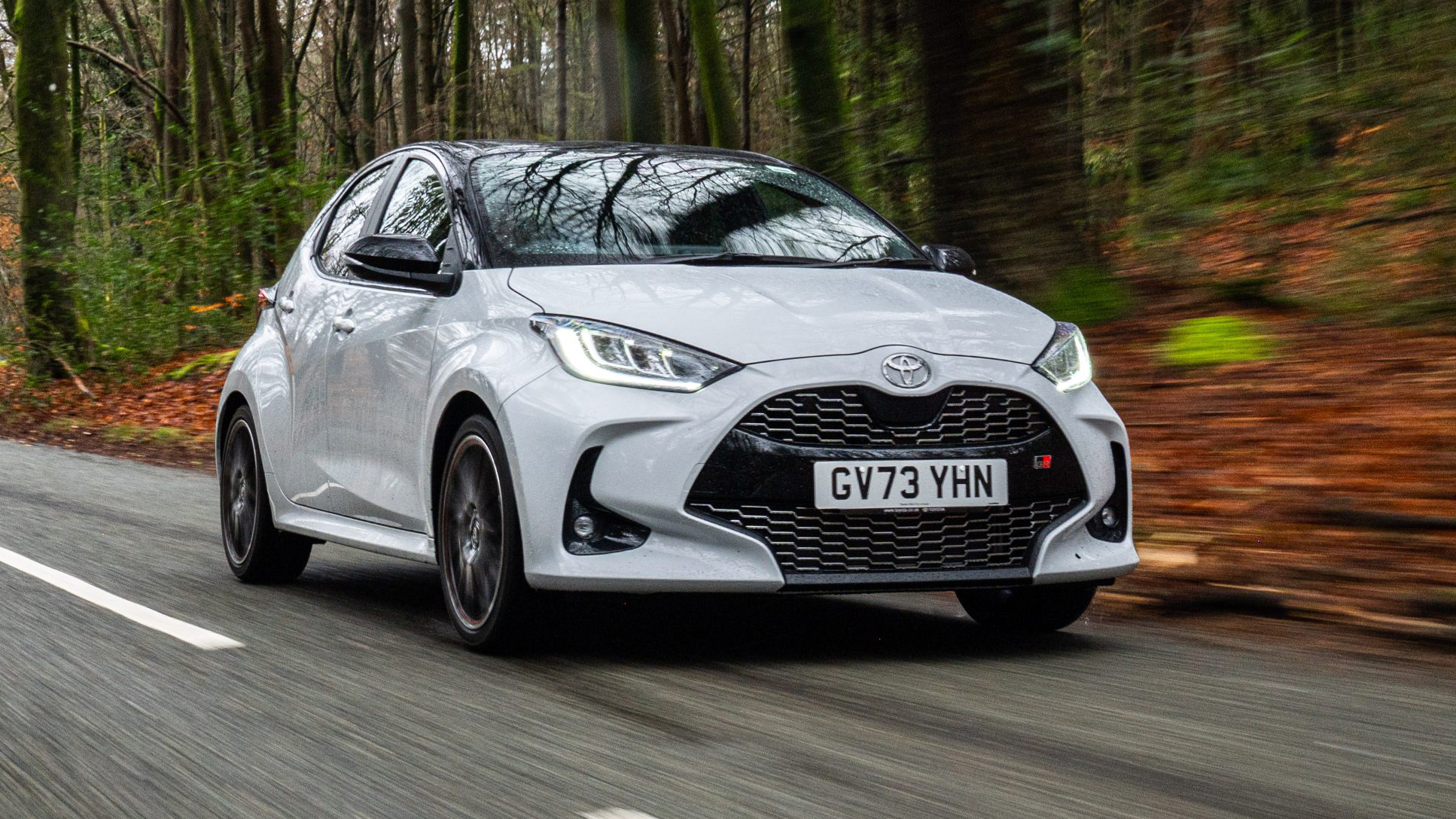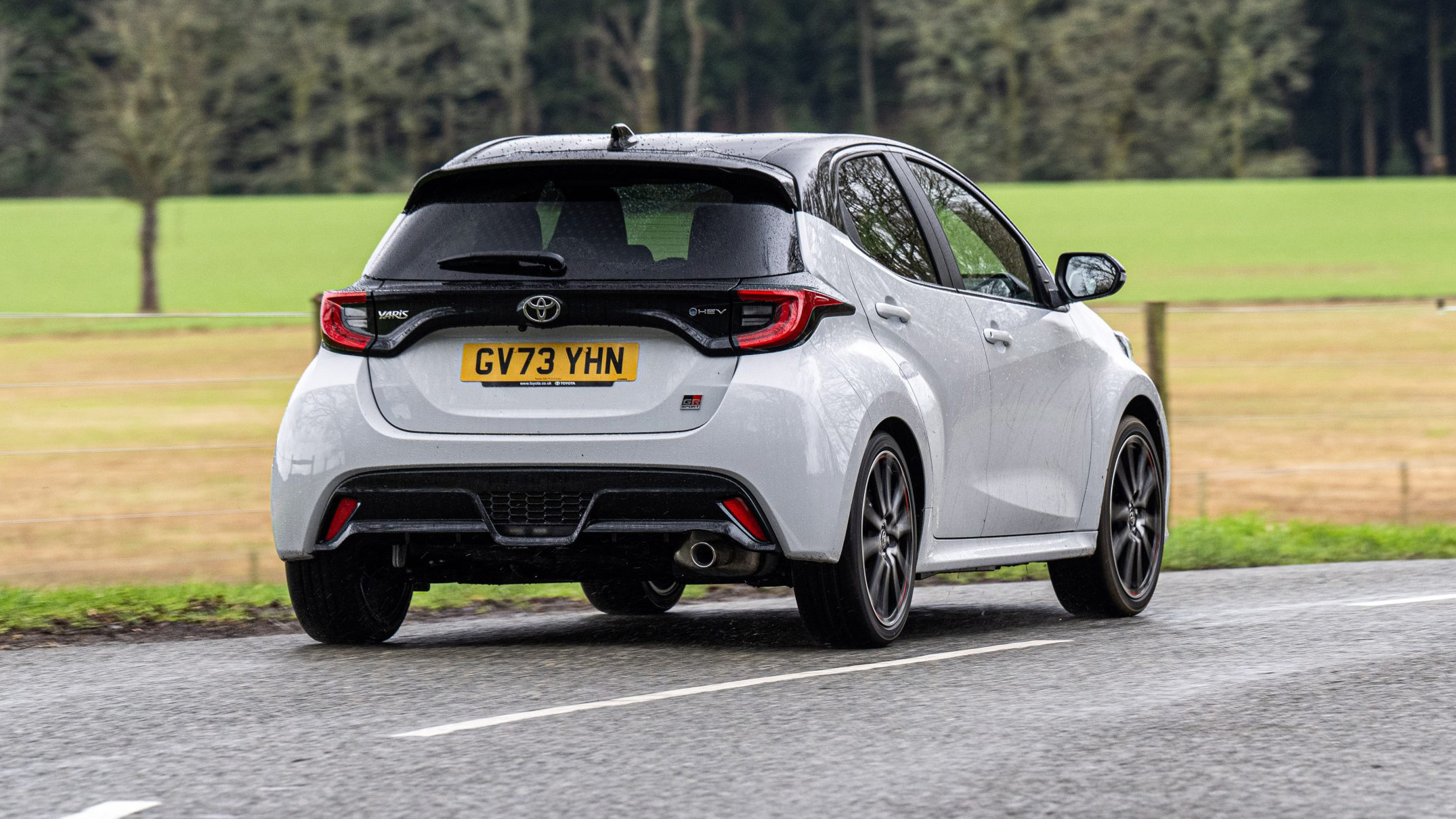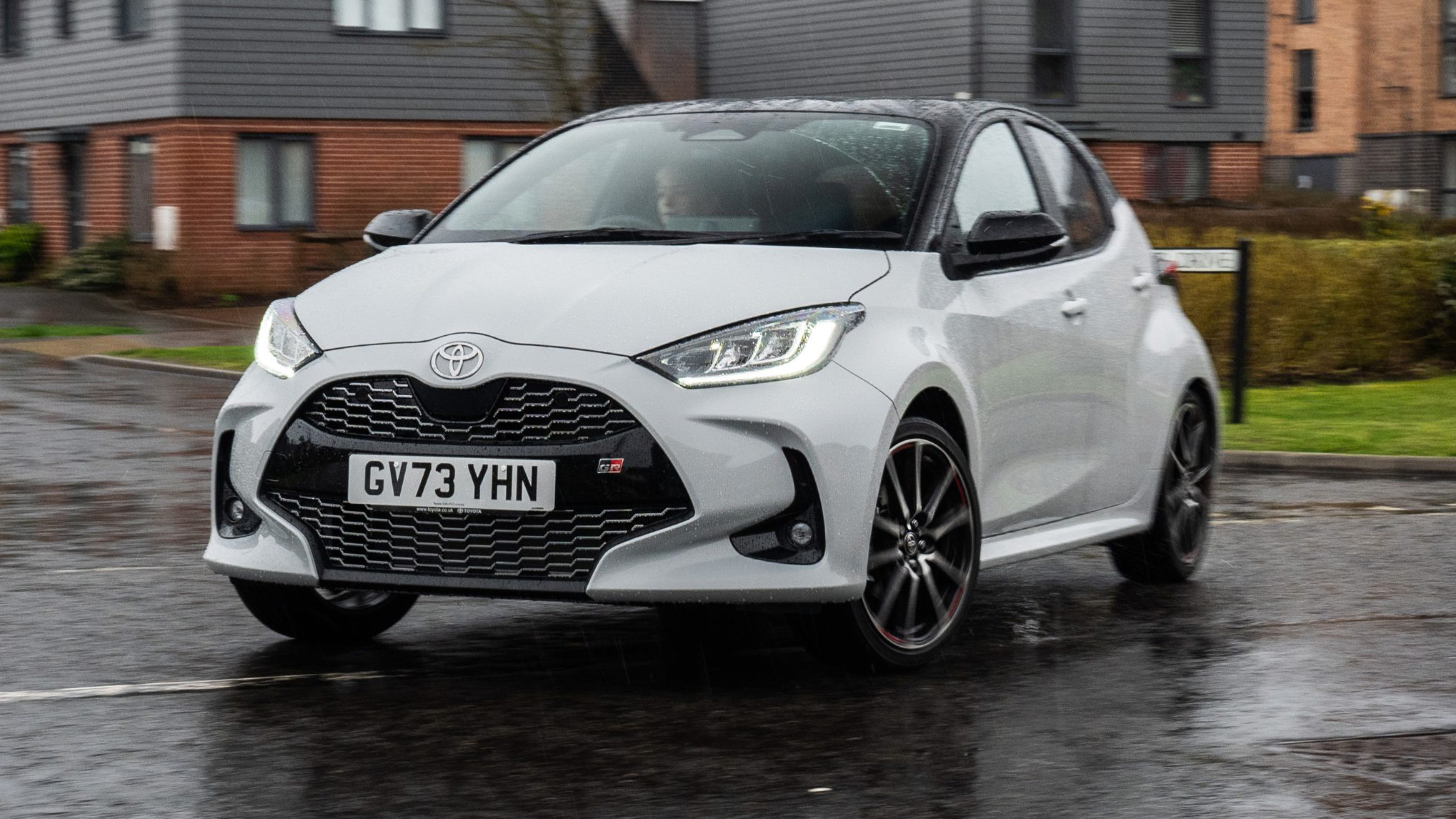
Good stuff
Unparalleled efficiency, smart looks, covers a lot of small car bases
Bad stuff
Some cheap plastics inside, CVT box not to everyone’s taste
Overview
What is it?
This is the fourth generation of Toyota’s familiar supermini, on sale since 2020. It’s a car that was delightfully innovative when it was first launched back in 1999, setting new standards for interior packaging and providing the feel of a car from the next class up in a compact footprint.
It’s been a gradual evolution to the car’s current look, though it’s become much more conventional over the years. The interior is less of a marvel than it was, but the hybrid-electric powertrain remains compelling for its low emissions (all the models are rated at 96g/km CO2 or below) and the driving experience has been commendably upgraded.
Looks alright though, doesn't it?
What it lacks in innovation, the Yaris makes up for with a certain amount of style. The latest one is wider and lower than its predecessor, and moving to a downsized version of Toyota’s GA-C platform helped – indeed it did wonders for the C-HR and Corolla.
Inside, you sit 60mm further back and 20mm lower than the old car, which makes it less amenable to the sorts of drivers who are more advanced in age and appreciate a higher hip point for swivelling out of the car. But nicer for people who like to get comfortable behind the wheel.
Does it drive well?
The Yaris is surprisingly direct and comfortable. A stiff base to push from (thanks to that shared platform) means that the suspension does what it should and smooths out the road, the longer wheelbase adds some ride refinement to motorway cruising (it doesn’t pitch as much as the old one), and the wider stance makes it a little bit less wobbly if you tip it into a corner with too much speed.
You’ve got the 3dr GR version of the Yaris if you want to pretend you’re behind the wheel of a rally car and actually enjoy yourself, but otherwise this less sporty one is grown-up and reassuring. So that’s good.
What about the engines?
There’s just the one basic setup that comes with the Yaris, but it’s available in two states of tune. You get a 1.5-litre 3cyl petrol engine that pairs up with an e-motor and small battery for either 114bhp and 104lb ft of torque, or 129bhp and 136lb ft.
Both flavours send power to the front wheels through our old friend the e-CVT gearbox. It’s not as bad as you might think: whereas older versions sent the revs sky high and kept them there, these days there’s a more naturalistic setup to the continuously variable transmission. It’ll still rev right up if you hoof the throttle, but it will settle down much quicker.
You’ll get to 62mph from a standstill in 9.7 and 9.2 seconds respectively, but most impressive is the approximately 70mpg fuel consumption rating that you could get close to around town if you wear your light shoes.
How about rivals?
The Yaris was practically the only hybrid supermini for a time, but now you’ve got the likes of the Renault Clio, MG3, Honda Jazz and Mazda 2 (though the latter is essentially a rebadged Yaris) to choose from, as well as EV offerings like the Peugeot e-208, Citroen e-C3 and Vauxhall Corsa Electric. The Skoda Fabia has kept it all old school and simple and nailed the brief. Tough field.
The Yaris comes in at the cheaper end of all these, though the MG3 Hybrid undercuts it significantly and the Fabia is also a smidge less expensive.
Our choice from the range

What's the verdict?
Drive it sensibly and carefully and you’ve got yourself a rewarding (in terms of fuel consumption at least) runabout. It’s never going to be the most exciting or engaging car to drive, but that’s largely irrelevant to the target market. And a criticism that Toyota has spectacularly addressed with the GR version of the car.
The tight turning circle, modest dimensions and light steering at parking speeds are probably of more importance to potential drivers, which make the Yaris about as fuss-free as a small automatic hatchback gets.
The Rivals
Trending this week
- Car Review
Kia EV5
- Car Review
Chery Tiggo 9










